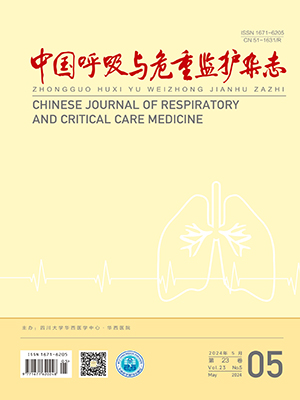| 1. |
Marik PE, Cavallazzi R, Vasu T, et al. Dynamic changes in arterial waveform derived variables and fluid responsiveness in mechanically ventilated patients: a systematic review of the literature. Crit Care Med, 2009, 37(9): 2642-3647.
|
| 2. |
李文雯, 万献尧. 感染性休克时液体复苏相关性肺损伤. 中国呼吸与危重监护杂志, 2012, 11(5): 510-513.
|
| 3. |
Muller L, Toumi M, Bousquet PJ, et al. An increase in aortic blood flow after an infusion of 100 ml colloid over 1 minute can predict fluid responsiveness: the mini-fluid challenge study. Anesthesiology, 2011, 115(3): 541-547.
|
| 4. |
Wu Y, Zhou S, Zhou Z, et al. 10-second fluid challenge guided by transthoracic echocardiography can predict fluid responsiveness. Crit Care, 2014, 18(3): R108.
|
| 5. |
Dellinger RP, Levy MM, Rhodes A, et al. Surviving Sepsis Campaign: International Guidelines for Management of Severe Sepsis and Septic Shock, 2012. Intensive Care Med, 2013, 39(2): 165-228.
|
| 6. |
Monnet X, Marik P, Teboul JL. Passive leg raising for predicting fluid responsiveness: a systematic review and meta analysis. Intensive Care Med, 2016, 42(12): 1935-1947.
|
| 7. |
Lansdorp B, Lemson J, van Putten MJ, et al. Dynamic indices do not predict volume responsiveness in routine clinical practice. Br J Anaesth, 2012, 108(3): 395-401.
|
| 8. |
Ganter MT, Geisen M, Hartnack S, et al. Prediction of fluid responsiveness in mechanically ventilated cardiac surgical patients: the performance of seven different functional hemodynamic parameters. BMC Anesthesiol, 2018, 18(1): 55.
|
| 9. |
申丽旻, 赵素琴, 赵鹤龄, 等. 《拯救脓毒症运动: 2008 严重脓毒症和脓毒症休克管理指南》解读(二): 液体复苏和血管活性药物的应用. 临床荟萃, 2008, 23(8): 598-600.
|
| 10. |
Sequeira V, van der Velden J. Historical perspective on heart function: the Frank-Starling Law. Biophys Rev, 2015, 7(4): 421-447.
|
| 11. |
司向, 黄牧云, 陈娟, 等. 被动抬腿试验对脓毒症合并心功能不全患者液体反应性的预测价值. 中华危重病急救医学, 2015, 27(9): 729-734.
|
| 12. |
Mallat J, Meddour M, Lemyze M, et al. Effects of a rapid infusion of 20% human serum albumin solution on acid-base status and electrolytes in critically ill patients. Intensive Care Med, 2016, 42(1): 128-129.
|
| 13. |
Guinot PG, Bernard E, Deleporte K, et al. Mini-fluid challenge can predict arterial pressure response to volume expansion in spontaneously breathing patients under spinal anaesthesia. Anaesth Crit Care Pain Med, 2015, 34(6): 333-337.
|
| 14. |
Biais M, de Courson H, Lanchon R, et al. Mini-fluid challenge of 100 ml of crystalloid predicts fluid responsiveness in the operating room. Anesthesiology, 2017, 127(3): 450-456.
|
| 15. |
杜微, 刘大为. Frank-Starling 曲线与容量管理. 中国实用内科杂志, 2015, 35(11): 887-896.
|




